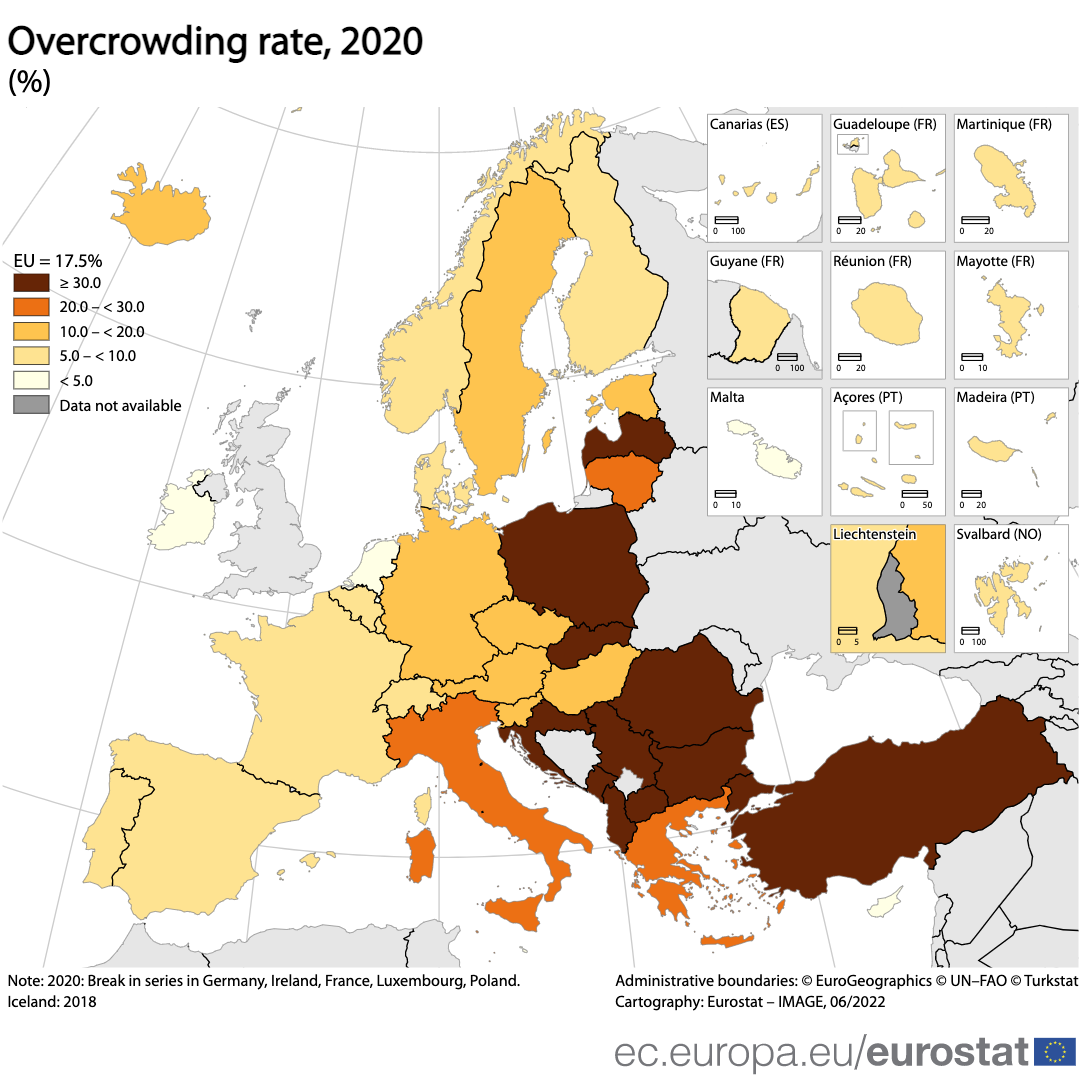In 2020, 17.5% of the EU population lived in overcrowded households, meaning they did not have enough rooms for the number of people in the household, their family situation and their ages. Lack of space in overcrowding households is amplified by having kids playing in the same room as parents trying to telework during the coronavirus lockdowns. Moreover, overcrowded environments can present a higher risk of spreading the virus.
Among the EU Member States, almost half the population in Romania (45.1%) were living in overcrowded households in 2020. This was also the case for around two in every five persons in Latvia (42.5%), Bulgaria (39.5%), Poland (36.9%) and Croatia (36.2%). At the opposite end of the scale, the lowest overcrowding rates were recorded in Cyprus (2.5%), Ireland (3.2%), Malta (4.2%) and the Netherlands (4.8%).
Source dataset: ilc_lvho05a
Housing cost overburden rate highest in Greece, Bulgaria and Denmark in 2020
For many households, the largest expenditure each month relates to housing costs. Housing affordability can be analyzed through the housing cost overburden rate. This rate shows the share of the population living in households which spend 40% or more of their disposable income on housing.
The housing cost overburden rate was 7.8% in the EU in 2020 with large differences between Member States. Rates below 5% were recorded in 13 Member States, with the lowest shares in Cyprus (1.9%), Lithuania (2.7%), Malta (2.8%) and Slovakia (3.2%). At the other end of the scale, rates above 10% were recorded in Denmark (14.1%) and Bulgaria (14.4%), with the highest rate recorded in Greece (33.3%).
Source dataset: ilc_lvho07a
For more information:
- Dedicated section on income and living conditions
- Database on income and living conditions
- Statistics explained article on living conditions - housing
To contact us, please visit our User Support page.
For press queries, please contact our Media Support.



